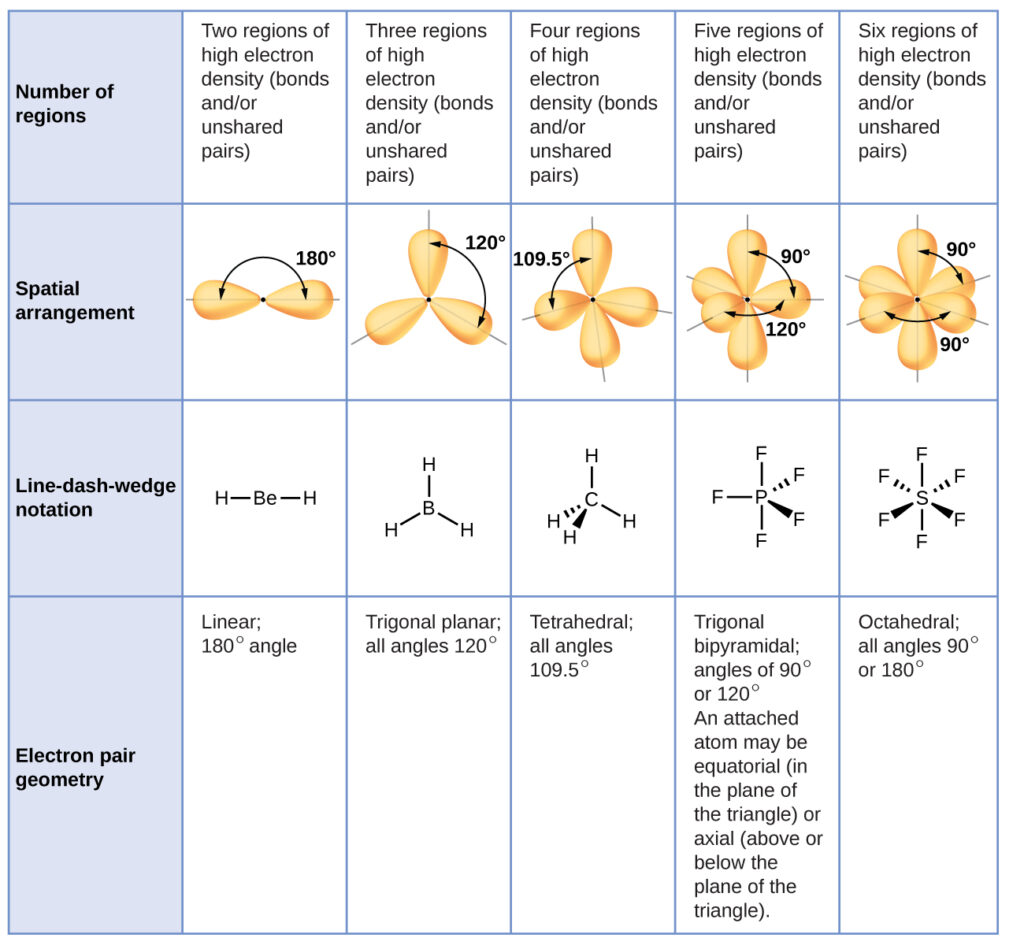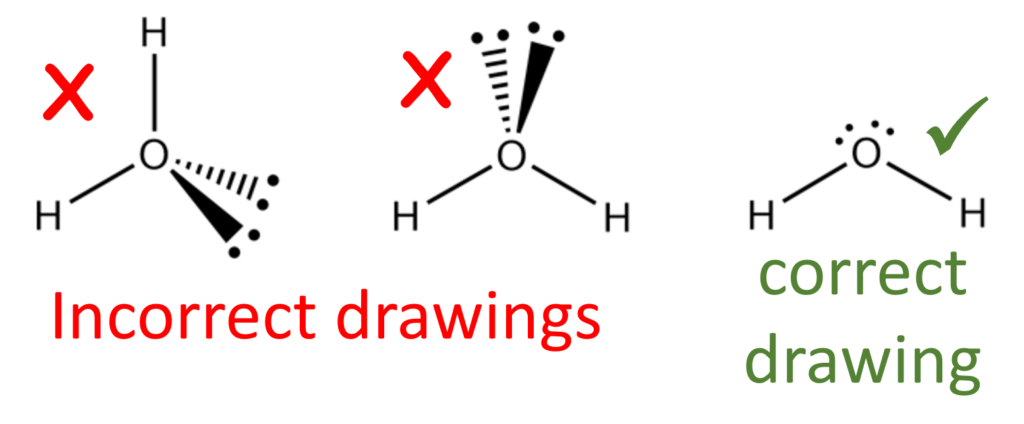The figure below illustrates this and other electron-pair geometries that minimize the repulsions among regions of high electron density (bonds and/or lone pairs).
- Two regions of electron density around a central atom in a molecule form a linear geometry;
- three regions form a trigonal planar geometry;
- four regions form a tetrahedral geometry;
- five regions form a trigonal bipyramidal geometry; and
- six regions form an octahedral geometry.

The Lewis structure of BeF2 ([link]) shows only two electron pairs around the central beryllium atom. With two bonds and no lone pairs of electrons on the central atom, the bonds are as far apart as possible, and the electrostatic repulsion between these regions of high electron density is reduced to a minimum when they are on opposite sides of the central atom. The bond angle is 180° ([link]).

When we have four domains around a central atom our geometry is tetrahedral and the farthest that the four domains can be from each other is 109.5°.
In H2O, like NH3 we have both bonding domains and non-bonding domains. As we saw with NH3 we do not draw a bond to the lone pair but instead, collapse the lone pair directly onto the atom. The location of the lone pair around the central atom implies its location in 3D space. In the drawing below we start off by showing how water has the same number of domains and geometry as methane above, however, we usually see water drawn as the figure on the right. The left to right figures shown here are meant to help you see how we can relate the water molecule on the right back to the above drawing of methane. A key thing to note is that although we cannot draw a bond to a lone pair, as shown in the two left figures when we draw the right water molecule it is implied that the location of the two lone pairs is going into the page and coming out of the page to complete the tetrahedral geometry.
